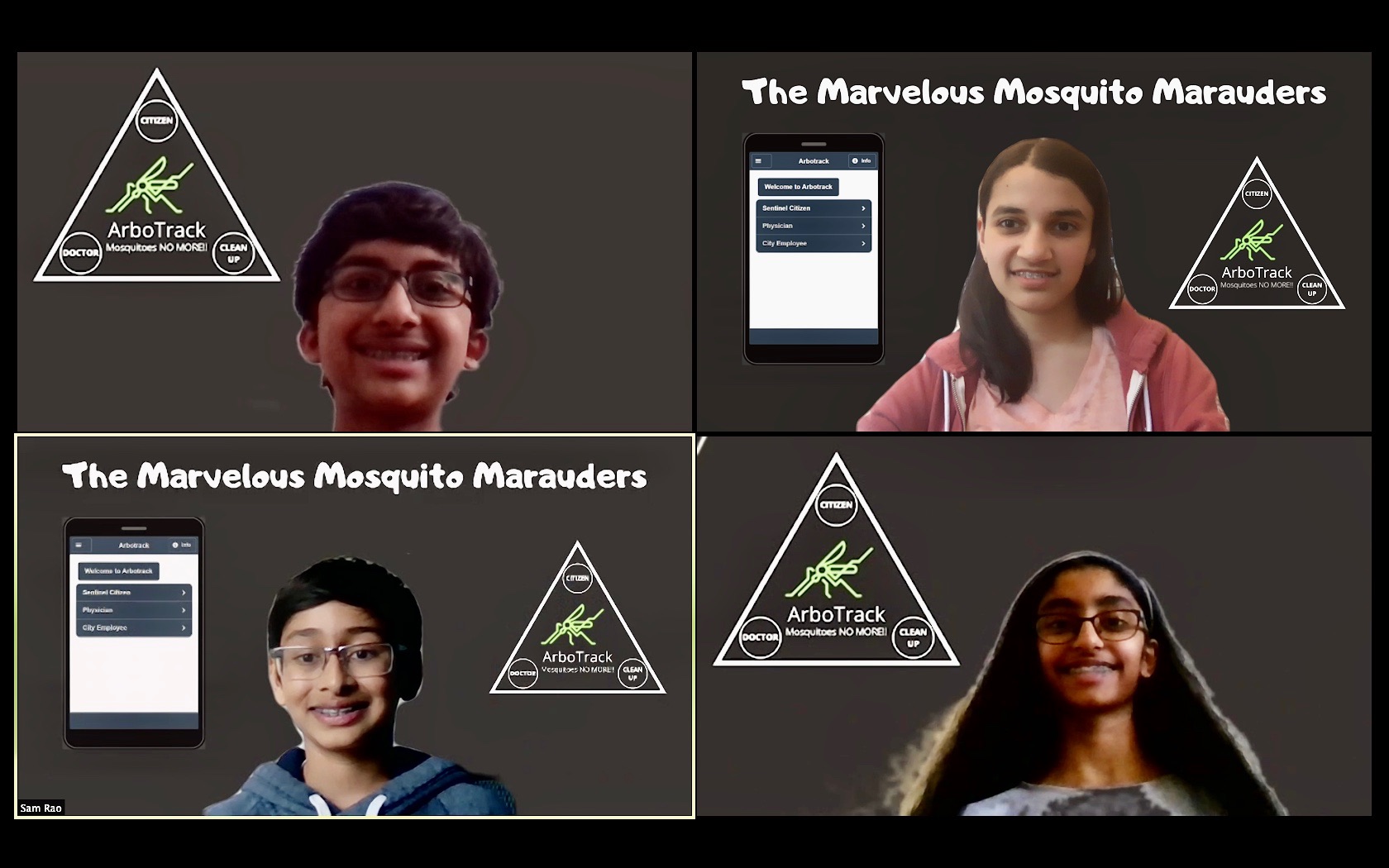STEM-In-Action Spring Scoop: The Marvelous Mosquito Marauders
The time has come! We have reached our very last 2020 STEM-In-Action grant winner's Spring Scoop. If you're just tuning into the eCYBER Blog, welcome. The U.S. Army Educational Outreach Program (AEOP) STEM-In-Action Grant awards eCYBERMISSION teams up to $5,000 to develop their projects into mature and scalable solutions in their community. Typically, we award this honorary grant to five teams, but in 2020 ten lucky teams took home the prestigious award. For the past few months we have caught up with all our lucky grant winning teams to see how their projects have been progressing since they were granted the prestigious award at last year's NJ&EE. Today we're catching up with our final SIAG winners, the Marvelous Mosquito Marauders!
--
Hello again! The Marvelous Mosquito Marauders have come to update you on our project since receiving eCYBERMISSION’s STEM-in-Action Grant. Just a reminder or for those just tuning in, our team consists of Ajay, Amulya, Avni, and Samvrit, 8th graders from Stone Hill Middle School located in Ashburn, Virginia. Our mission is to reduce the number of mosquito-borne diseases with ArboTrack, a crowd-sourced, geolocation, and photo-based app that accurately locates areas of standing water. This year, we are using eCYBERMISSION’s STEM-In-Action Grant to implement ArboTrack in both the local and global communities.
The first section of our project was making significant updates to our app by improving its efficiency and user-friendliness. We have made front-end enhancements such as adding clear buttons and text on the user interface, which will accommodate users without having difficulties when using ArboTrack. For more reliability, we made sure users were who they registered to be by making all the registration and login fields mandatory. To add an extra layer of security, city employees are now validated with a confirmation email. A major issue that we faced while testing our app was that some users would enter the latitude and longitude, which confused the Google Maps API. So, a text was added, notifying the user that they didn’t have to enter anything.
We have encountered some issues while working on Community Outreach. Due to the pandemic, we cannot have presentations in public areas such as libraries to bring awareness to ArboTrack. We tried solving this issue by posting on our social media accounts, but not many people pay attention to accounts with few followers. We decided to have recorded webinars and post them on our website and social media accounts, as we cannot do any live presentations. Also, we tried getting in contact with local news channels and agencies, but we are currently waiting for responses. We will continue contacting news agencies and present our project, showcasing ArboTrack, in front of Mosquito Abatement Agencies and HOA members. Hopefully, we will receive feedback so we can implement their suggestions in our app.
Despite the issues we have encountered, we are sticking with our timeline and have exciting future plans and goals we are going to meet! Real-time goals for our app include continuing to enhance ArboTrack such as linking the physician to a specific area/report, which will enable a specific physician to be assigned to a specific area. We plan to continue training our ML model with more new images and then improve our model. For community outreach, we will record and post our webinar on our social media accounts so others are aware of our app. Goals in the future include publishing ArboTrack in Apple’s App Store and the Google Play Store, integrating our app with Mosquito Abatement Agency (MAA) software, and gathering feedback from citizens, physicians, city employees, and Mosquito Abatement Agency officials. The most ideal outcome of our project would be integrating our app with MAA software and receive feedback on improving it to fit MAA officials’ needs. We are planning to publish our app during Spring, but we may be held back due to time-frame constraints. We are very excited to publish ArboTrack in both the Apple/Google Play stores! We can’t wait to see various users using our app and making our community a better place to live in with the touch of a button!
--
As is typical of our STEM-In-Action grant recipients, we know this team is onto effect something bigger than just their local community. Mosquito-borne diseases are a global problem and with the progress of their ArboTrack app, their effectiveness in combatting these disease could have a significant effect on the global community. We cannot wait to see what becomes of their app in the future!
-Mission Control
Colleen Minan
AEOP Communications & Marketing Specialist
cminan@nsta.org






Comments
Post a Comment
We welcome your comments and expect that our conversation will follow the general rules of respectful civil discourse. This is a moderated blog, and we will only post comments from bloggers over 13 years of age that relate to eCYBERMISSION. We will review comments for posting within one business day. Bloggers are fully responsible for everything that they submit in their comments, and all posted comments are in the public domain. We do not discriminate against any views, but we reserve the right not to post comments.